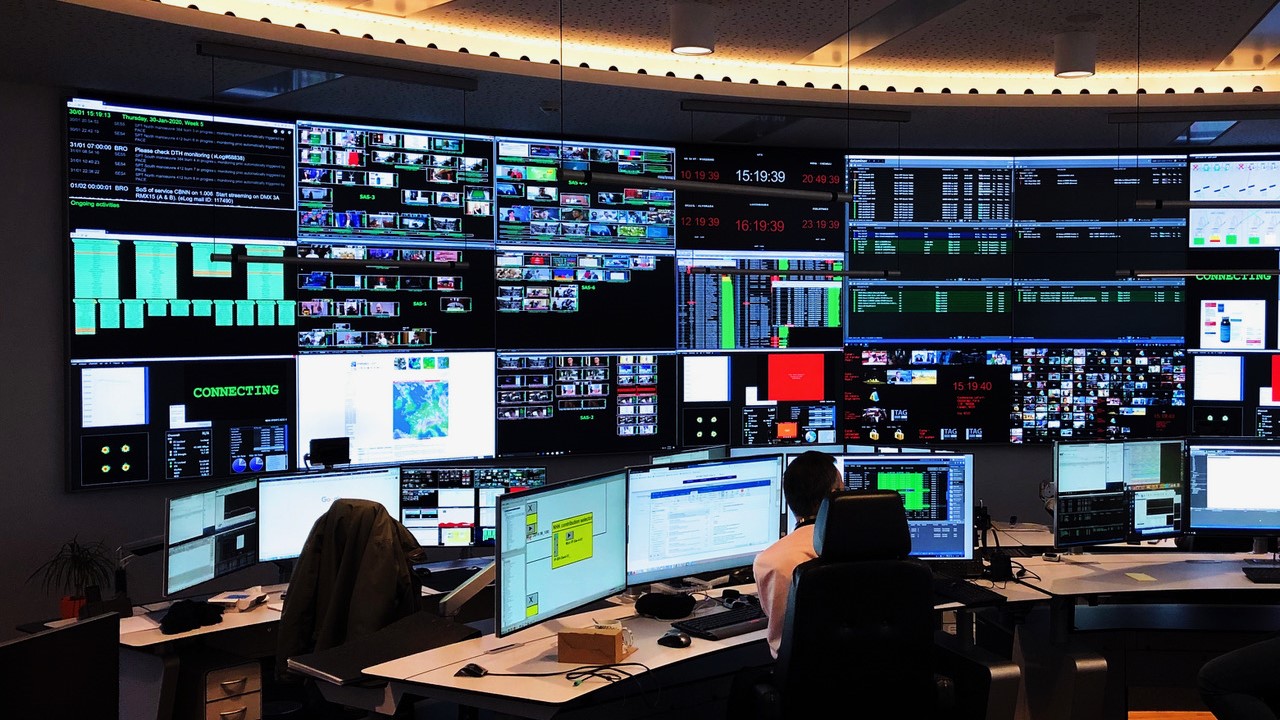How Satellite and IP Connectivity Enable Reliable Communications During Pandemic
Content and connectivity continue to be essential, maybe even more so now

The COVID-19 pandemic has reshaped our world, dramatically changing people’s daily lives across the globe. We have gone from collaborating with business colleagues in an open office space, hanging out with friends and family and enjoying entertainment in public venues to first being isolated at home and then adhering to social distancing rules in an incredibly short span of time.
A few months down the road, many industries, including the broadcasting sector, have felt the effects of lockdown and social distancing measures. While live sports and events have been put on hold, video consumption of news and entertainment skyrocketed. More people are spending time at home watching TV; either to listen to the latest news and updates on COVID-19 or being entertained. This has created a challenge for broadcasters, pay-TV operators and content owners to deliver content in the most reliable and cost-effective way possible, while coping with the sudden surge in demand for content.
Thanks to satellite and IP distribution technologies, broadcasters have been able to provide timely information to the population during the COVID-19 crisis. Several key trends have emerged within the media market during this time, as well as real-world examples of broadcasters leveraging IP and satellite to communicate critical live news and entertainment to the world.
PAY-TV TRENDS DURING COVID-19
During the pandemic, we’ve seen that content and connectivity continue to be essential, maybe even more so. Perhaps one of the first and most evident positive impacts we have witnessed was the sharp increase in viewership of TV news as a reliable source for up-to-date national and regional insights.
Omdia research found that the U.K.’s BBC One ”Six O’Clock News” bulletin averaged 6.43 million viewers across April 2020, up more than 54% on the 4.17 million average for April 2019. Viewing uptake included young audiences, which is particularly relevant.
Similarly, Comcast data shows that there has been a 64% increase in consumption of news programming since the start of COVID-19. Comcast also reported that linear TV consumption has increased by four hours to 64 hours per week, video-on-demand usage has hit record highs, video game downloads are up 50% overall and streaming and web video consumption has increased 38%.
A VAB report found that television viewing during the pandemic increased substantially for younger audiences, with teenagers having the biggest increase in viewing. Teens ages 12-17 spent 175% more time watching TV from 9 a.m.-4 p.m. in March 2020 than they did during the prior month, while adults ages 35-49 increased their habits by 42% during the same time period. Live local news, in particular, has been a huge draw for younger viewers during the pandemic. Nielsen found that in the U.S., local news experienced a 20% viewership increase of persons aged 2-17 and a spike of more than 10% for viewers aged 25-54.
Global research firm Analysys Mason anticipates that consumers will generally retain traditional pay-TV services throughout the pandemic due to the growing importance of in-home entertainment.
While there has been concern that the loss of live sports content may contribute to an increase in churn, so far this does not seem to be the case. Perhaps that’s in part because pay-TV providers have been filling their channels with key matches and “best of” sports shows in place of live sports content. As we start to return to live sports around the world, fan interest is at a peak.
We’ve also witnessed the continued growth of online video platforms that have a global reach. For example, Telefónica reported an 8% increase in the number of accesses to its OTT service and a 14% increase in viewing time in early March 2020.
SATELLITE AND IP BECOME EVEN MORE CRITICAL
During the pandemic there has also been a surge in video streaming from pure OTT players such as Netflix and YouTube. This, combined with people working from home, has placed a significant strain on network infrastructure across the world. OTT providers have had to stream in SD instead of HD during certain times of the day (i.e., peak viewing) and in certain regions to reduce network congestion. For instance, Netflix reduced the bitrates across all streams for 30 days in Europe in order to lessen the impact of Netflix traffic on European networks.
Throughout the pandemic, broadcasters have understood that there are multiple audiences in each home and have been very effective in using a combination of satellite and IP to deliver critical information and content to the masses in real-time with high quality and reliability, regardless of spikes in viewership. Leveraging the wide technical reach of satellites and IP connectivity solutions like SES’s OU Flex, pay-TV operators and broadcasters can produce and deliver TV offerings in areas of the world where broadband infrastructure is limited. These technologies have proven to be imperative in helping media organizations relay important news information during the COVID-19 outbreak, ensuring that the news flow goes on uninterrupted.
TECHNOLOGY PERSEVERES DURING THE LOCKDOWN
During this unprecedented time, satellite has been a rock of stability, ensuring business continuity for broadcasters, pay-TV operators and content owners so that they can remain a reliable source of news and entertainment for audiences worldwide.
A great example is seen with BBC World News’ use of the SES Astra satellite at 19.2 degrees East for broadcasting news across Europe. Since the beginning of the year, the footprint of BBC World News has grown steadily from being available in 465 million homes worldwide to over half a billion homes. The demand for linear TV, especially news programs, is on the rise, and relying on satellite, BBC was able to efficiently and cost-effectively respond to the demand for accurate news and information.
IP connectivity also helped facilitate the delivery of news and TV. German public broadcaster SWR was able to deliver a two-hour live broadcast from the Bavarian mountains, amid the COVID-19 global health crisis. SWR used SES’ OU Flex solution to ensure IP connectivity for Skype and VoIP calls made during the live broadcast, which was produced by Steiwer TV.
These next-generation distribution technologies are helping to deliver more than just news and entertainment, they have also helped to bring people across the world together. For example, March 26 was officially marked “Asteroid Day,” the United Nations’ day of global awareness and education about asteroids. This year, major players in the space, communications and broadcasting industry held a virtual town hall meeting with astronauts, scientists and celebrities to discuss ways of coping with living in self-isolation and quarantine. The intent was to send a message of hope, trust in science and mutual encouragement for everyone currently faced with the challenges of the COVID-19 crisis. Broadcasters and direct-to-home satellite users were able to pick up the live broadcast from SES’s Astra 1M satellite to share this important message worldwide.
CONCLUSION
COVID-19 has had a considerable impact on society and markets across the globe. As we optimistically look to the future and anticipate the new normal, one constant in our industry has been how broadcasters, pay-TV operators and content owners continue to deliver TV leveraging satellite and IP. In our unique position at SES as the leading content connectivity provider, we are humbled to be able to support the uninterrupted broadcasting of news, bring entertainment programming to the masses, and be part of initiatives that connect people during this extraordinary time.
Deepak Mathur is executive vice president, Global Sales at SES Video.
Get the TV Tech Newsletter
The professional video industry's #1 source for news, trends and product and tech information. Sign up below.

